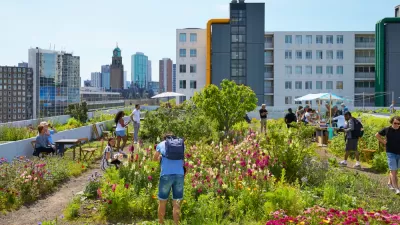The Netherlands gains the title of 'Safest Place to Cycle,' which is mainly due to their extensive infrastructure. But how did these high quality cycle paths come to exist?
After World War II, the nation had to rebuild which increased the number of jobs. As jobs increased, wages too increased which led to many being able to afford more expensive goods. In 1957, this led to many more cars on the streets. Infrastructure was torn down and demolished to make room for cars. New developments had huge roads for motorized traffic. Bicycling had decreased by large numbers.
In 1971, out of 3,300 lives that were lost, 400 were children under the age of 14. These extreme numbers got people on the streets protesting against cars. "Stop the Child Murder," were what posters said. The people wanted safer streets for children, pedestrians, and cyclists. The oil crisis in 1973 also helped promote cycling, and soon after these mass protests against cars had caused the city to think differently. New infrastructure was then built to accommodate these new ideas. Policies to encourage cycling were put in place to remind the people how beneficial cycling is.
This video, courtesy of 'Sustainable Cities Collective,' explains the history of cycling in the Netherlands and how issues changed policies over the years.
FULL STORY: Occupy Amsterdam? How Mass Protests of Cars Fostered Dutch Cycling Policy

Alabama: Trump Terminates Settlements for Black Communities Harmed By Raw Sewage
Trump deemed the landmark civil rights agreement “illegal DEI and environmental justice policy.”

Planetizen Federal Action Tracker
A weekly monitor of how Trump’s orders and actions are impacting planners and planning in America.

The 120 Year Old Tiny Home Villages That Sheltered San Francisco’s Earthquake Refugees
More than a century ago, San Francisco mobilized to house thousands of residents displaced by the 1906 earthquake. Could their strategy offer a model for the present?

Ken Jennings Launches Transit Web Series
The Jeopardy champ wants you to ride public transit.

BLM To Rescind Public Lands Rule
The change will downgrade conservation, once again putting federal land at risk for mining and other extractive uses.

Indy Neighborhood Group Builds Temporary Multi-Use Path
Community members, aided in part by funding from the city, repurposed a vehicle lane to create a protected bike and pedestrian path for the summer season.
Urban Design for Planners 1: Software Tools
This six-course series explores essential urban design concepts using open source software and equips planners with the tools they need to participate fully in the urban design process.
Planning for Universal Design
Learn the tools for implementing Universal Design in planning regulations.
Clanton & Associates, Inc.
Jessamine County Fiscal Court
Institute for Housing and Urban Development Studies (IHS)
City of Grandview
Harvard GSD Executive Education
Toledo-Lucas County Plan Commissions
Salt Lake City
NYU Wagner Graduate School of Public Service





























